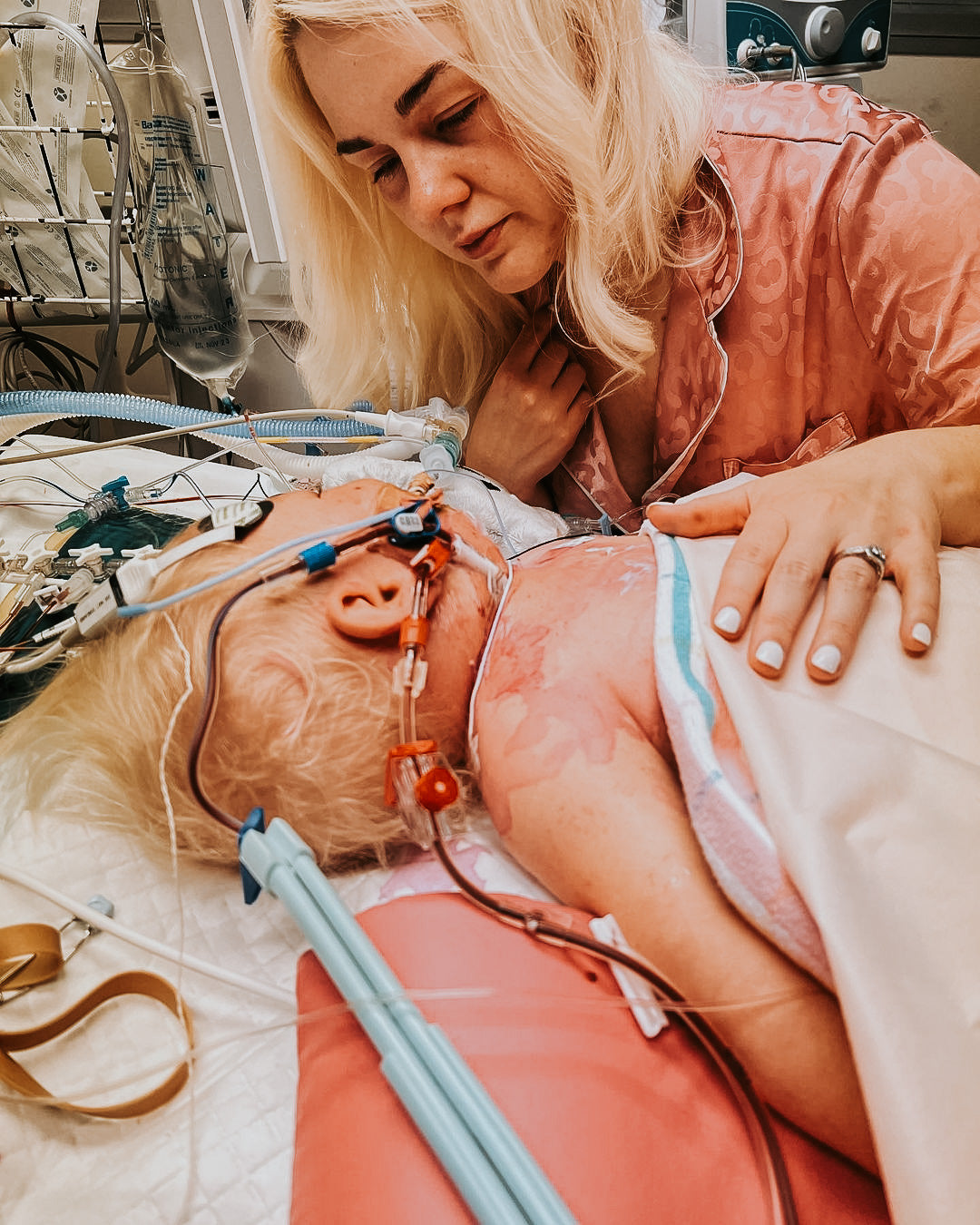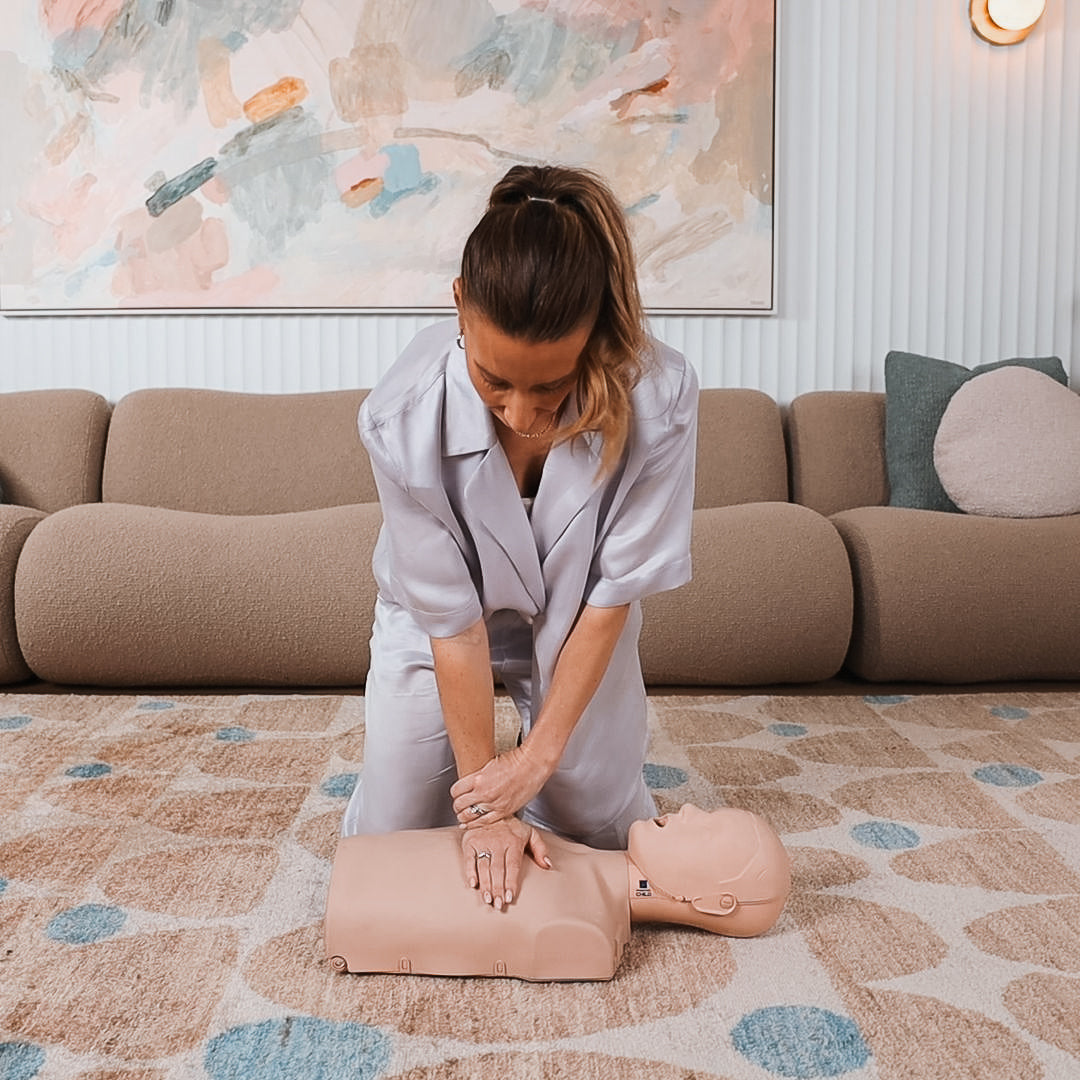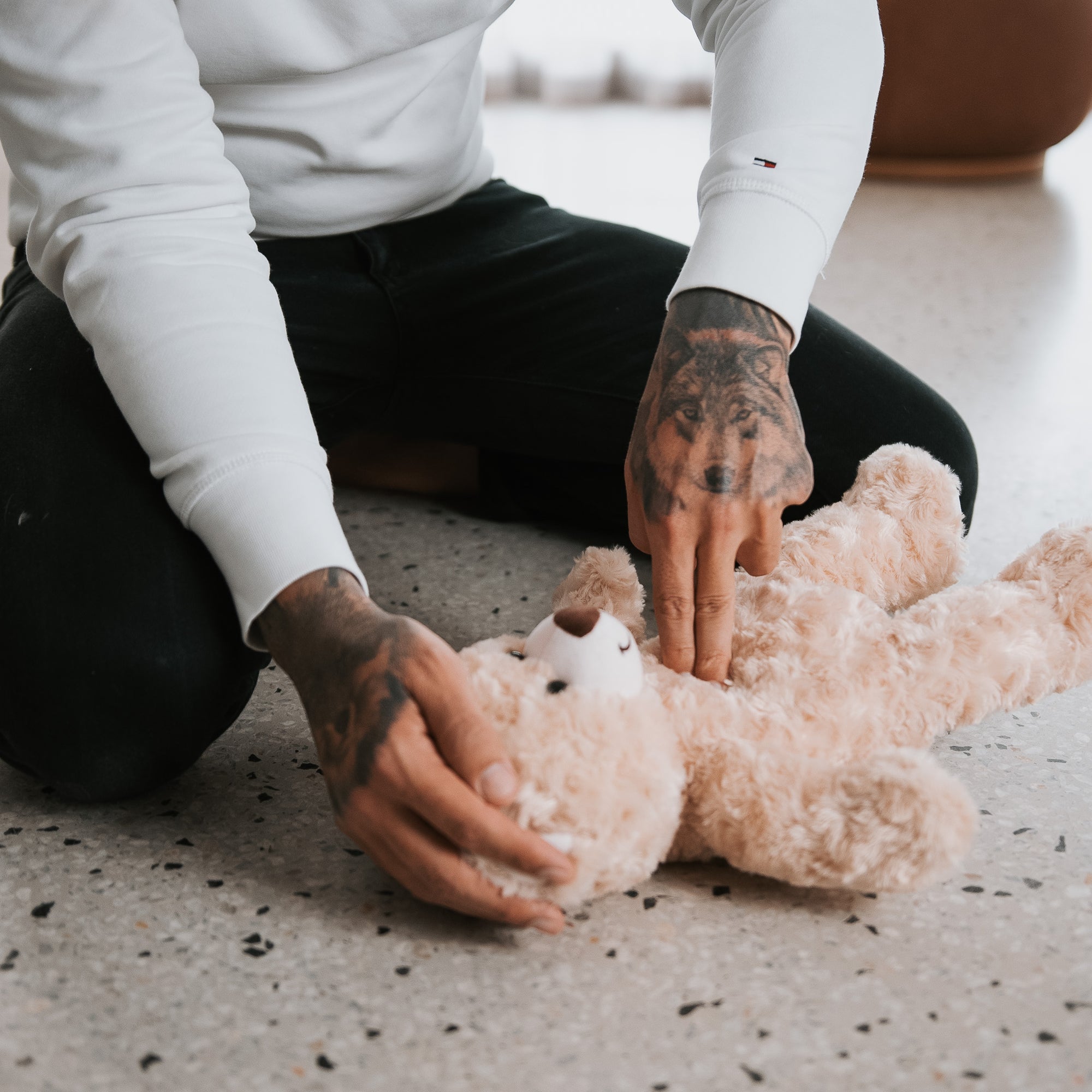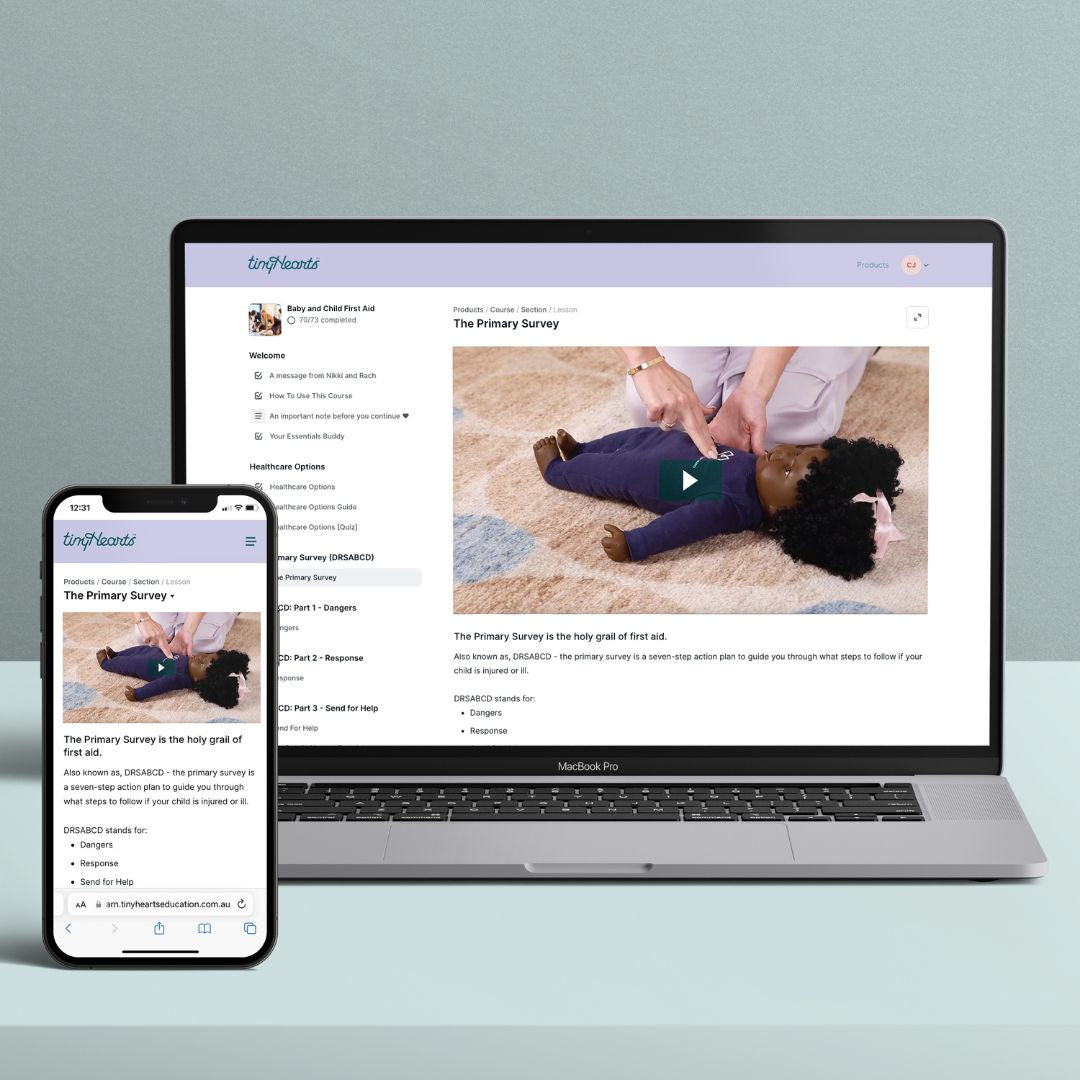

· By Tiny Hearts
Group A Streptococcus - How to recognise the signs and keep your family safe
What is Group A Streptococcus?
Group A Streptococcus (Strep A) is a bacteria that usually causes mild diseases like sore throats and school sores. For the most part, it is a common infection that shows as a mild illness that many people recover from without needing to see a doctor. However, the cases where it becomes more serious and life-threatening are when the bacteria invade the body and enter areas such as the blood. This is called invasive Group A streptococcal disease
How common is it? How many people have been infected with it?
According to data from the Department of Health's National Communicable Disease Surveillance Dashboard, there were 1163 cases of iGAS in Australia in 2022. A study from the Murdoch Children't Research Institute found the number of children admitted to hospital with strep A rose from 23 in 2020 to 107 in 2022. In 2022, Victoria had 42 cases of invasive strep A infections at RCH and Monash Children's hospital. Two Victorian children died from the illness last year.
As of January 13, there have been 52 infections recorded in 2023. The WHO has documented a rise in the number of invasive strep A cases in a number of countries around the world. There have been recent headlines in the UK where there was an increase in the number of infections, causing tens of thousands of cases of scarlet fever and the deaths of 25 children.
What is causing the spike in numbers?
There are a few theories on the cause of the spike in numbers. One of these is that because of the lockdowns, people were all insulated from infectious bugs, including strep A. This means that fewer people were getting low-grade infections of the strep A bacteria, and this reduced people's immunity to it. Another theory is that the rise in other respiratory illnesses, such as influenza, means more people are getting sick. Viruses can cause damage to the lining of the throat, which opens up the opportunity for the invasion of bacteria into the bloodstream.

What are the symptoms of Group A Streptococcus?
The symptoms your child shows will depend on where the infection develops in the body.
Symptoms of strep throat:
- pain when swallowing
- fever
- muscle aches and pains
- tiredness
Symptoms of scarlet fever
- red, sore throat
- swollen glands
- fever
- red blotches on the skin
Symptoms of Impetigo
- red sores on the skin that form blisters
- blisters pop and leave a moist area with a yellow/brown crust at the edge
Symptoms of cellulitis
- skin is red, painful and swollen
- skin feels tight and warm to touch
Signs the bacteria is progressing to invasive Group A Streptococcus
So if strep A is a common illness that can self-resolve, how can you tell when your little one has the more sinister Invasive Group A Streptococcus? Look for the same red flags and signs of any critically unwell child. If you see any of these things, take your child to the hospital.
Signs of invasive strep A:
- Fevers/chills
- Dizziness
- Shortness of breath
- Stiff neck
- Nausea
- Vomiting
- Red skin infection
- Red sunburn-like rash
- Limb pain and reluctance to walk
- Abdominal pain
- Lethargy
- Decreased urine output

Why Invasive Group A Streptococcus is so serious
Invasive Group A streptococcus is when the bacteria infect a normally sterile part of the body such as the blood, meninges, joint spaces, heart muscles and bone. When these areas are infected, it can cause Group A streptococcal toxic shock syndrome (STSS). This can result in disseminated intravascular coagulation, which is when the blood clots inside the blood vessels when it isn't supposed to. This can cause blockages in vessels leading to vital organs, and at the same time, puts the patient at risk of bleeding out. Another rare but serious complication of Group A strep is Necrotising fasciitis, also called the "flesh-eating disease". This is a bacterial infection that can spread rapidly and lead to sepsis, organ failure and death. This happens when the bacteria invade the skin, multiply quickly and releases toxins that cause blood to clot in the blood vessels. This results in the death of the tissues in the skin and muscle.
How is it treated?
The earlier treatment can be commenced, the better. That is why recognising signs of a critically unwell child and being able to tell it's more than just a normal bacterial infection is so key. Strep A is treated with antibiotics.
How do kids catch it?/How is it spread?
The bacteria is spread through large respiratory droplets (coughing, sneezing) or direct contact with infected people.
How can I prevent it?
The best way to protect yourself from Group A Strep is similar to any other bacteria, practice good hygiene and wash your hands often. Avoid contact with people who are infected with the bacteria. Get treatment for skin infections promptly to prevent them from spreading.
Is there a vaccine available for it?
Currently, teams are working on developing a preventative vaccine, but at the moment, there are no current vaccines available.
16 comments
-
My daughter had it last year, four days of fever, hospital thinking it was a viral rash appearing and with persistance we went back to gp who diagnosed, then shock from family that scarlet fever was still around. Antibiotics treated but agreed, more awareness is needed.
Celeste on
-
This is absolutely heart breaking and thank you to the family for raising the awareness.
This makes me feel so hopeless as a mum who doesn’t have a medical background. It feels like in order to advocate for our babies we need to be able to diagnose our children ourselves and tell the doctors what needs to be done.
Not only this story makes me feel this way but many other stories I’ve heard similar to this.
Brooke Somerton on
-
My two sons have both been diagnosed with Strep A over the past month, with one week in hospital for each child, MET calls and a cocktail of IV antibiotics and continued oral once we are home. My older son actually formed an abscess on the back of his throat, had surgery and 3 weeks later still receiving antibiotic treatment for this. I wish I knew sooner just how dangerous and quickly this illness can make little ones turn. There needs to be wider comms about just how sinister this bug can be.
Lauren on
-
My daughter had strep throat a few weeks back. I had no idea how serious it was. Reading this blog she had 6 of the 8 signs of invasive strep A. She refused antibiotics and we ended up at hospital where they gave her a huge course of penicillin via an injection. This bug is fast moving and I wish I saw this blog 3 weeks ago. Thank you for sharing this information.
Megan on
To the extent permitted by law, Tiny Hearts excludes any liability, including any liability for negligence, for any loss, including indirect or consequential damages arising from or in relation to the use of this blog content.
This blog may include material from third party authors or suppliers. Tiny Hearts is not responsible for examining or evaluating the content or accuracy of the third-party material and it does not warrant and, to the fullest extent permitted by law, will not have any liability or responsibility for any third-party material. This blog was written for informational purposes only and is not a substitute for professional medical advice. Nothing contained in this blog should be construed as medical advice or diagnosis.The content on our blog should not be interpreted as a substitute for physician consultation, evaluation, or treatment. Do not disregard the advice of a medical professional or delay seeking attention based on the content of this blog. If you believe someone needs medical assistance, do not delay seeking it. In case of emergency, contact your doctor, visit the nearest emergency department, or call Triple Zero (000) immediately.
The author of this information has made a considerable effort to ensure the information is in-line with current guidelines, codes and accepted clinical evidence at time of writing, is up-to-date at time of publication and relevant to Australian readers.
Would you know what to do in a first aid emergency with your little one?
What can make the biggest difference in an emergency is what you, as a parent, do BEFORE the ambulance arrives. Knowing what to look for, when to treat at home or when to escalate can be the difference between life and death.
Created by first responders, this course is designed to provide you with reassurance and confidence to provide care to your child when they need it most.
As parents ourselves, we understand finding the time to learn first aid can be tricky! We've created this online course so you can learn from your device at home. Purchase now and learn first aid right away, at the pace that suits you.
Our online course covers CPR, choking, allergies and much more. Follow and practice along with our expert educators and co-founders of Tiny Hearts through several scenarios to reinforce your knowledge and feel confident and ready for any first aid emergency with your little one.








